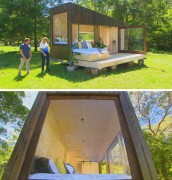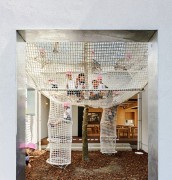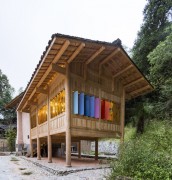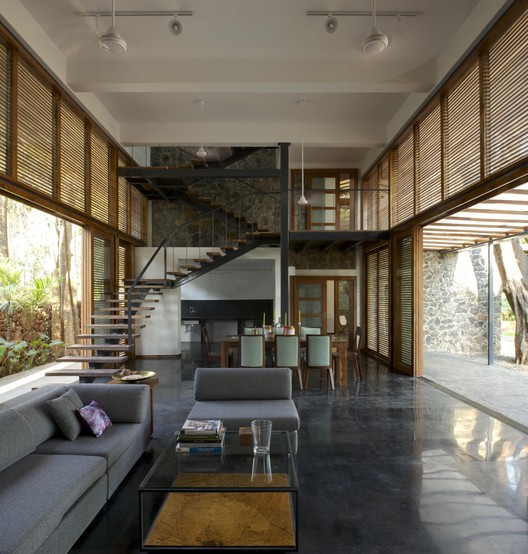
© Bharath Ramamrutham
- Architects: architecture R/T
- Location: Carona Village, Aldona, Goa 403508, India
- Architects In Charge: Tallulah D’Silva, Rajiv D’Silva
- Area: 450.0 m2
- Project Year: 2012
- Photographs: Bharath Ramamrutham
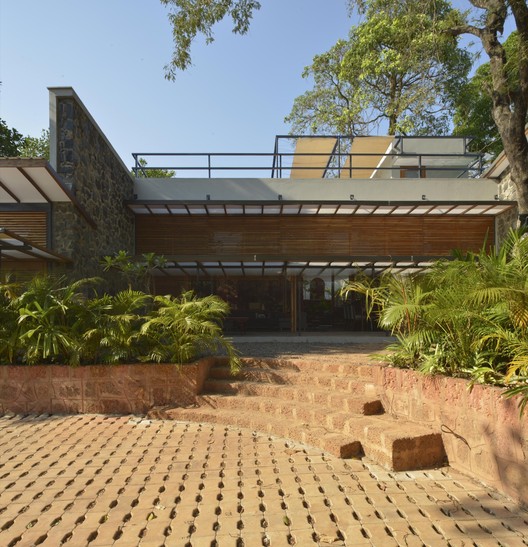
© Bharath Ramamrutham
Nivim is Goa’s first Gold rated green building certified by the IGBC – Indian Green Building Council in October 2013. It sits on a 1025 square meter property on a hill in a sleepy village in Goa. Before construction, the site had 14 fully mature trees- two jackfruit trees, one mango tree, two tamarind trees and one telful tree. The design of the house incorporates all these existing trees. Two trees in particular were located right in the center of the property and one of them rises up almost 15 meters.
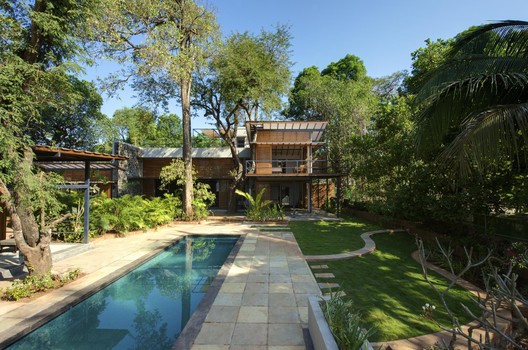
© Bharath Ramamrutham
The house is designed such that two walls in each room can completely open to make the rooms a part of the surrounding landscape. Each bedroom is designed like a pavilion in the garden with its own private verandahs and green space as well as large bathrooms that can only be built in the countryside with their own dedicated open space and open baths. The remainder of the property is designed with overlapping courtyards and gardens.
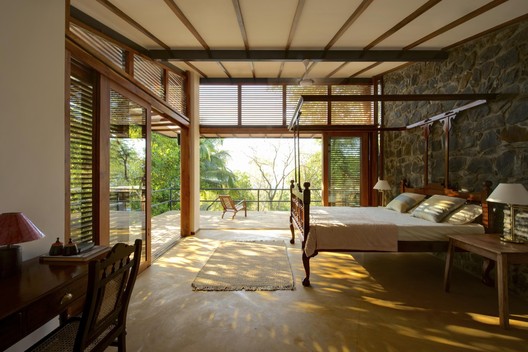
© Bharath Ramamrutham
An important criterion at Nivim was to employ green practices without sacrificing the luxury lifestyle for its occupants and architectural design of the house. Impact on the environment was a key factor while designing the house. During construction, Nivim Goa minimized use of energy and resources by using local materials and materials with high recycled content while also minimizing waste. During operations, the house will consume less energy and water, use solar energy, recycle and reuse rain water and grey water on-site while providing a healthy environment for occupants.
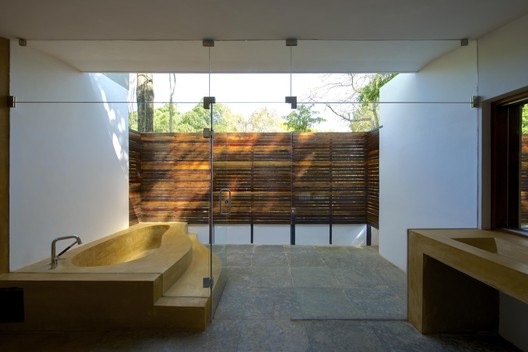
© Bharath Ramamrutham
The building with natural stone textures blends well with the surrounding vegetation and wilderness. The rear portion of the property was more or less flat where an old crumbling house existed, this was retained to make an effective visual buffer and screen partly open areas of the toilets/baths, kitchen and other circulation spaces.
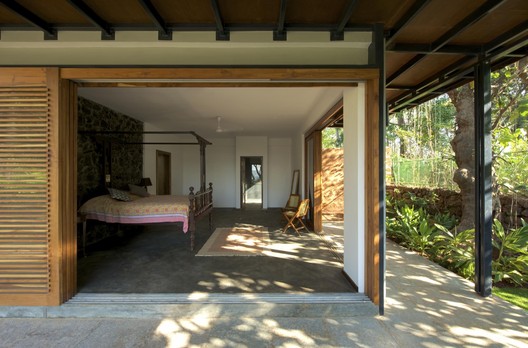
© Bharath Ramamrutham
Existing trees have been retained and provide shade to the building thereby reducing energy costs. Old wood salvaged from elsewhere in Goa from demolition sites have been used (25% of total wood needed) in the building thereby saving trees from being cut. New trees both fruiting and woody have been planted. Bamboo has been planted at many places to provide for the future.
A special feature of the house is a unique pavilion overlooking the pool that is designed to be a self contained unit with a bathroom, bedroom and a covered sit-out.
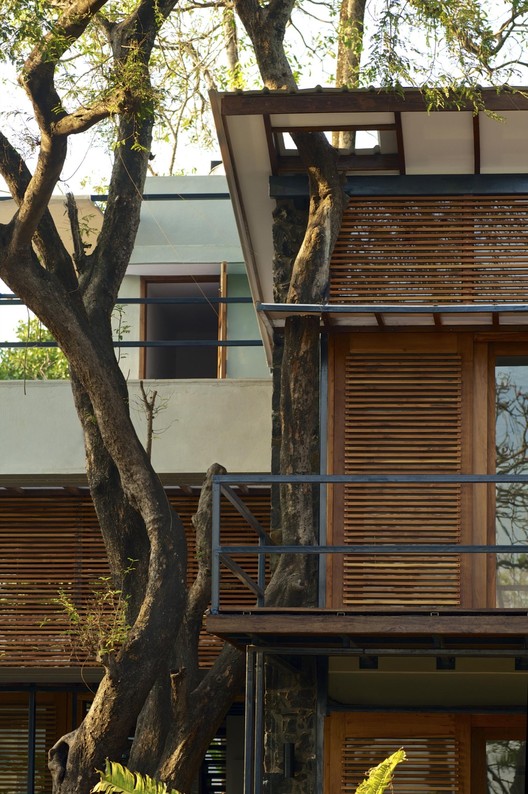
© Bharath Ramamrutham
The wooden screens are effectively used to enhance and replicate effect of filtered light streaming in from surrounding trees. The building is located at highest point for privacy and with vantage views of pristine landscape. The old crumbling wall at rear restored and used as effective buffer to living / dining spaces. The partly open to sky bathrooms enhance airiness and connect to nature.
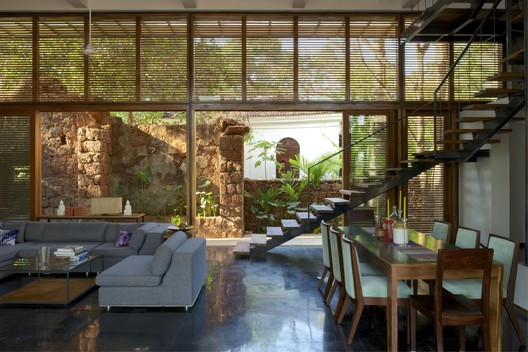
© Bharath Ramamrutham
The buildings have been built using materials naturally available like stone, wood, adobe fillers and new materials made from recycled wastes like fly-ash bricks, tetrapac sheets, etc. For one, the hill slope has been retained and the building integrated within its natural slope. The natural and locally available basalt stone and its un-plastered finish makes the building blend well with the surrounding landscape as well as offer thermal cooling to the building. The open plan with minimal walls allows for maximum natural ventilation and day lighting minimizing the use of artificial systems to cool and ventilate the building. The adobe and terracotta pot fillers also reduce the thermal heat effect and effectively help in limiting the heat absorbed by the roof/terrace slab. The china mosaic finish also helps in reflecting sun’s heat. The solar water heater reduces energy consumption. All waste water from the kitchen and the bathrooms is routed to a waste water treatment system with reed beds, settlement and polishing pond. A large underground tank harvests 1,00,000 liters of rain water and replenishes the swimming pool. There are tangible benefits of the above systems in energy and water savings.
Some materials like laterite rubble, mud for adobe fillers, have been recycled/reused from within the site. Load bearing system of construction has been employed for all the stone masonry. Stone walls reflect heat; cool the building, so no artificial cooling is necessary. Percolation of rain water through percolation pits or pipes has been installed at certain points on the site to improve the ground water table of the area and the well water on the lower stretches of the hill. Since subsurface is hard laterite, rain water from the plot is channelized to an underground tank for storage and use for the swimming pool and secondary uses. The floor is finished with cudappa mirror polished in the main living/dining and kitchen areas for better durability and in rough Kota finish in the ground floor verandah areas and swimming pool hard landscape for a rustic look.
